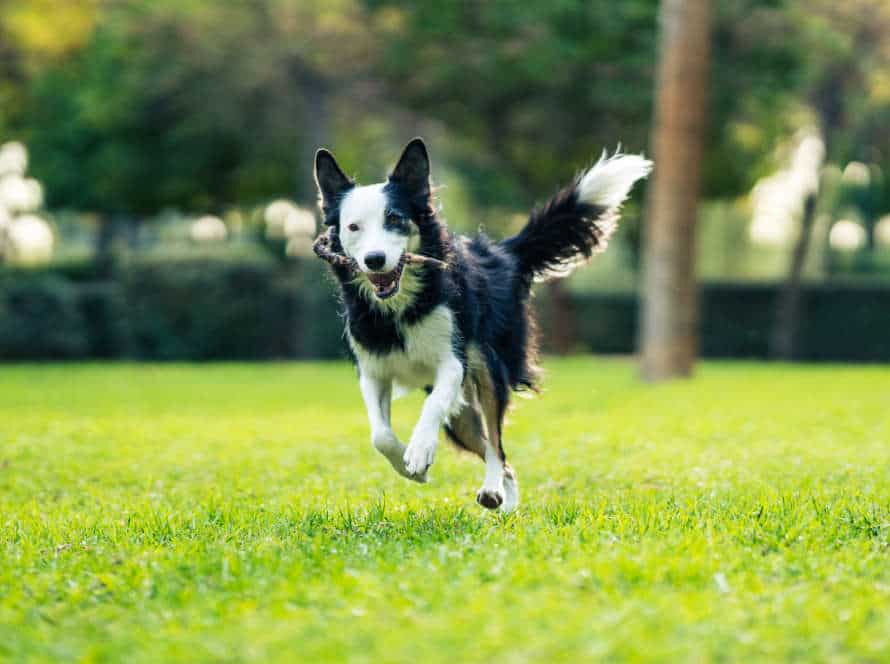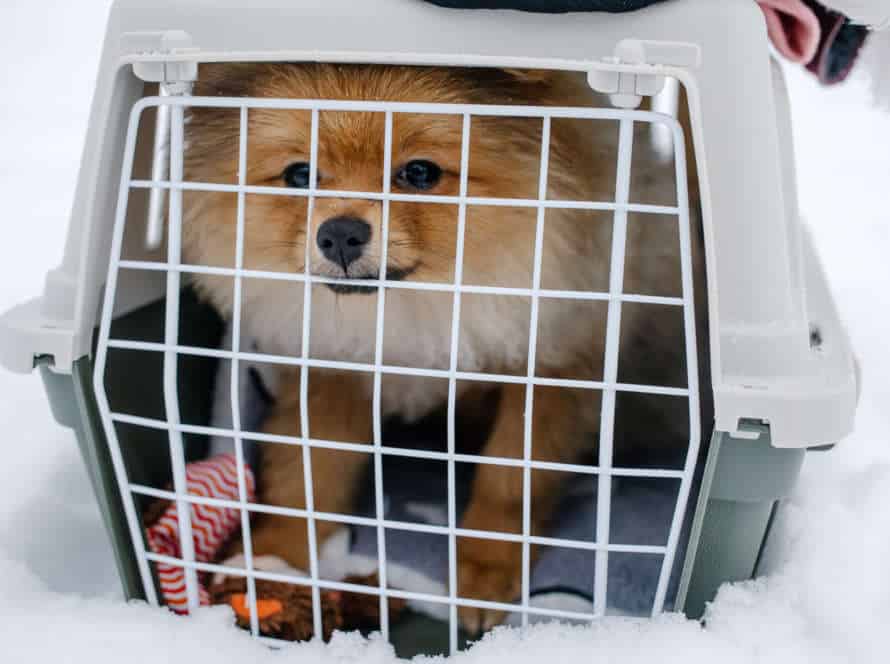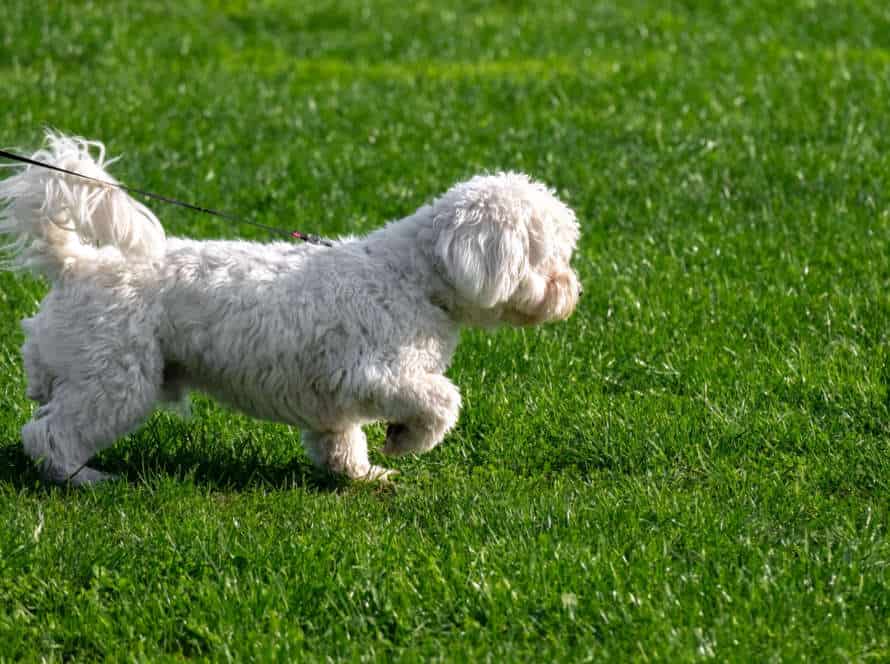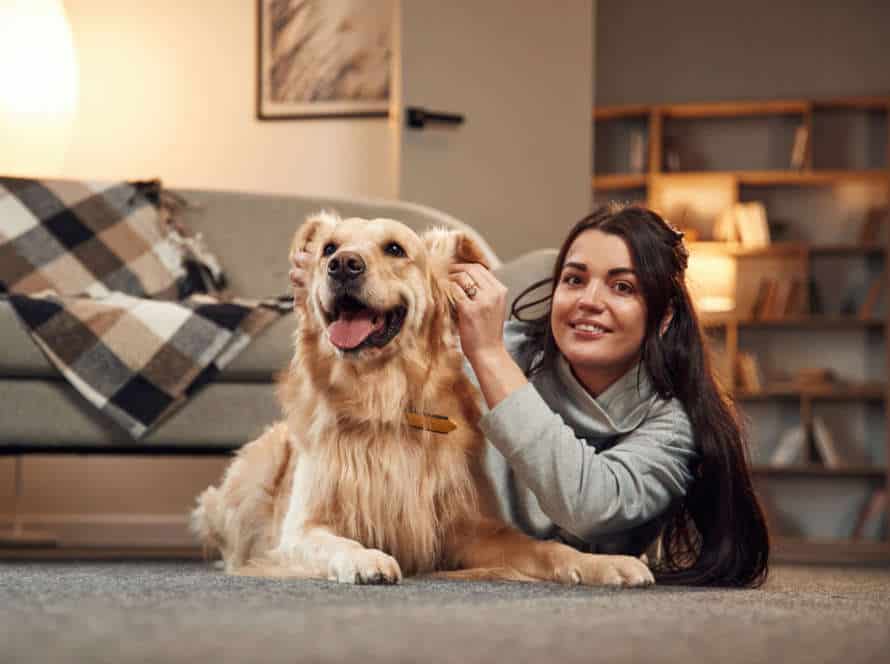Understanding Crate Training
Crate training is popular for house training puppies. It’s all about introducing your pup to a confined space that makes them feel safe. It can set boundaries and stop destructive actions. To get the most out of crate training, you need to know the basics. This guide explains the principles and how to handle issues that come up.
What is crate training?
Crate training is teaching your pup to view the crate as a place of safety, comfort and relaxation. It’s useful for when you’re away from home, at the vet or transporting them.
A few tips to follow:
- Start slow and use rewards as encouragement.
- Don’t use the crate as punishment, it should be positive.
- Pick the right size for them to stand, move around and lie down comfortably.
- Make it part of their schedule – consistent crate time.
Crate training can help with behavioral issues such as chewing, barking and digging, plus make your dog feel secure and relaxed.
Benefits of crate training
Crate training is a great way to teach your pup! It offers them a designated spot and better behaviour. Some of its benefits include:
- Housebreaking – Crate training helps your pup learn to control their bladder/bowel movements.
- Safe Haven – Crate training can give your pup a secure feeling and a private area to relax when stressed or tired.
- Helps with Travel – Using a crate can make traveling smoother for you and your pup, especially if it’s by air.
- Reduces Chewing/Destructive Behaviors – If your pup is anxious or bored, they might chew or act destructively. A crate can help them stay calm and reduce these behaviors.
- Separation Anxiety – Crates can help dogs with this condition to feel secure and stay relaxed.
- Pro Tip: Ensure you pick the right size crate and make sure your pup is comfy.
Choosing the right crate size
Choosing the perfect crate size for your pup is essential to crate training. It should be big enough for them to stand, turn and lie down comfortably. But, not so big that they can use one corner to sleep while using the other as a bathroom! Here’s how to choose:
- Measure your pup’s height from floor to head.
- Measure their length from nose to tail.
- Add 3-4 inches to these measurements to get the ideal height & length of the crate.
- Buy a sturdy crate that meets these measurements.
Crates that are too small may cause discomfort and anxiety, while those that are too big may make crate training somewhat pointless. Introduce the crate gradually and use positive reinforcement to make it a comfy and safe space for your pet.
Pro Tip: Use the manufacturer’s size guide to get the right size for your pup’s breed & size.
Common Crate Training Issues
Crate-train your pup for a safe, secure space. It’ll make potty training simpler. Also, your pup will remain relaxed if you are away. But, like with all dog-training, issues can arise. Here’s a guide to common crate training problems and solutions!
Crate Anxiety and Fear
Crate anxiety and fear can be common when crate training. Dogs might become anxious, stressed, vocal, or even destructive. Here are some solutions:
- Introduce it gradually. Let the pup explore the crate with the door open and put treats/toys inside.
- Start with short sessions. Increase the duration as they become more comfortable.
- Use treats and praise for good behavior and for going in the crate.
- Provide plenty of exercise and playtime before crating.
- Ensure the crate is the right size and comfy. Put favorite toys/blanket in there.
Pro tip: Crate training takes patience, consistency, and positive reinforcement. Never use it as a punishment.
Symptoms of crate anxiety
Crate anxiety is a common form of anxiety in dogs. Symptoms include panting, whining or barking, destructive behavior, shaking or trembling, drooling, chewing the crate, trying to escape, going to the bathroom in the crate, decreased appetite and water intake, or irregular bowel movements.
It’s vital to handle crate anxiety quickly for your dog’s health. With training and lifestyle changes, it can be managed successfully.
Causes of crate anxiety
Crate anxiety is a thing that can come up during crate training. It’s caused by lots of different causes. Two of the most common causes are lack of proper conditioning and wrong use of the crate.
No proper conditioning? Crate anxiety can occur if a dog is put into a crate too quickly or has bad experiences with it. Introducing them to the crate slowly and linking it to good experiences like treats and rewards is important.
Incorrect usage? Using the crate as punishment or leaving the dog in for too long can give them anxiety and stress. Never force them inside and make sure they have food, water, and toys to keep them busy.
By addressing the causes of crate anxiety, pet owners can ensure their pup’s crate training is successful and that their pup is happy and cosy in their crate.
Solutions for crate anxiety
Crate anxiety is a common issue when crate training your pup. But, there are three simple solutions to help your furry friend feel secure and comfy in their crate.
- Start Slow: Introduce your dog gradually to the crate. Just a few minutes every day, and gradually increase the time. This will help prevent fear or anxiety.
- Positive Reinforcement: Reward your pup with treats and praise when they enter their crate voluntarily. Make their environment cozy with a padded bed and toys. Your goal: create positive associations with the crate.
- Cover the Crate: Cover the crate with a blanket or sheet to make a dark, den-like atmosphere. This will help them feel secure and comfy in their designated sleep area.
Follow these steps and provide a safe and stress-free space for your pup to relax in their crate.
Whining and Howling in the Crate
Whining and howling in the crate can be a bothersome issue when it comes to crate training. It’s a process that helps your pet feel secure and lets you take them along with you.
Here are some tips to combat whining and howling:
- Get the right size and style of crate. It should be big enough for your pet to stand, turn around, and lie down.
- Give your pet enough exercise and mental stimulation before crating.
- Use positive reinforcement. Offer treats or toys to make the crate a happy place.
- No attention or letting out. That reinforces the unwanted behavior.
- Increase crating time slowly. Until they’re comfortable with longer periods.
Be patient and consistent with crate training. Reward them for good behavior.
Causes of whining and howling
Whining and howling are common crate training issues that dog owners face. To fix it, the causes need to be addressed. Here’s the top 5:
- Separation anxiety – dogs that are scared of being alone may whine or howl.
- Lack of exercise – when dogs aren’t getting enough exercise and mental stimulation, they may whine or howl in their crate.
- Improper crate training – if the training is too harsh or not consistent, dogs may whine or howl in fear and anxiety.
- Uncomfortable crate – if the crate is too small, hot, or uncomfortable, dogs may whine or howl in distress.
- Medical issues – issues like UTIs or GI problems can cause discomfort, leading to whining and howling.
Solutions for whining and howling
Whining and howling can be troublesome for pet owners who are crate training their furry friends. But there are solutions!
Solution 1: Acclimation- Introduce the crate slowly. First, leave them in it for just a few minutes, then gradually increase their time in it.
Solution 2: Placement- Put the crate in an area of the house where they can see and hear you. Don’t isolate them, as this can make them anxious.
Solution 3: Comfort and security- Use a soft bed and blanket to create a den-like feel. Leave toys and chews in the crate to keep them occupied.
Solution 4: Positive reinforcement- Treat and verbally praise your pet when they enter or exit the crate.
These solutions will make crate training a positive and successful experience for both you and your pet.
Barking in the Crate
Dog owners often face crate training issues – like barking – in their pups. Barking can be due to boredom, fear, or anxiety. Here are 4 solutions:
- Check the crate: Make sure your pup’s crate is the right size and has good ventilation and comfy bedding.
- Gradual Training: Start slowly and keep your pup engaged with toys and games.
- Quiet Time: Maximum 4 hours in the crate. If you must be gone longer, get a dog walker or pet sitter.
- Positive Reinforcement: Praise, pet, and treat when they settle or stop barking.
By consistently making crate time more enjoyable, you’ll have a happier pet – and one who is quiet too.
Causes of barking
Barking during crate training is common. It could be caused by separation anxiety, fear, boredom, or needing the bathroom. To address it, first figure out what’s causing it. Here are some tips:
- Introduce the crate slowly, with a positive attitude.
- Put treats, toys, and blankets in it to make it inviting.
- Teach basic commands like “sit” and “stay“.
- Ignore the barking to avoid reinforcing it.
- Exercise your pup to reduce anxiety and boredom.
Be patient and consistent. Pro Tip: Talk to an expert to find a solution tailored to your pet.
Solutions for barking
Barking and crate training? Yikes! Here are two tips to help:
- Cover the crate with a blanket or sheet. This will help create a calm atmosphere and provide some ventilation.
- Ignore the barking. Don’t respond to it. Instead, reward your pup with treats when they’re quiet.
Be consistent and patient and your canine companion will soon understand that quiet behavior is rewarded and barking isn’t.
Escaping the Crate
Crate training can be helpful for pet owners. Here are common issues and their solutions:
- Crying/whining? Ignore it until they quieten down. Give a soft blanket or toy.
- Chewing/scratching? Exercise and playtime before crating. Cover the crate with a blanket.
- Refusal to enter? Put treats and toys in the crate. Feed meals inside to form a positive association.
By using these solutions, crate training will be positive and successful for you both!
Causes of crate escaping
Crate escaping is a common problem pet owners face during training. Usually, it’s due to bad training techniques causing pets to be anxious and stressed. Other reasons exist too. Here are some of them:
- Crate size: Maybe too small, leading to unease.
- Exercise & Stimulation: Pets need these to stay calm in their crate.
- Separation Anxiety: When owners leave for a long time, pets may escape the crate.
- Health Issues: Urinary tract infections can make pets leave the crate for relief.
- Noises: Loud noises, like thunderstorms, make pets anxious and they may escape.
It’s important to identify the cause of crate escaping and resolve it. To do this, use proper training, exercise, set a routine, and create a comfy environment.
Solutions for crate escaping
Crate escaping can be a pesky issue when crate training your pet. Here are two solutions that can help:
- Check the crate size: Ensure your pet’s crate is the right size for them to stand, turn and lie down comfortably. If it’s too small or too big, they might be tempted to escape.
- Keep your pet occupied: Place toys, treats and cozy bedding inside the crate to make it a pleasant experience for your pet. Also, start with short crate training sessions and gradually increase the time. This way, your pet will start to associate the crate with positive experiences.
By doing this consistently, your pet will feel more content in their crate and you won’t have to worry about them escaping.
Crate Training Considerations
Crate training is an awesome way to give your pup a secure spot. But there can be difficulties. Before starting, understanding the fundamentals and pondering any possible problems is essential. This guide offers info and tips on crate training that can help you train your pup more efficiently.
Gradual Acclimation to the Crate
Acclimating your pet to the crate is important when crate training.
Give time and patience for this acclimation for your pet to be stress-free in their crate.
Here are some steps:
- Introduce the crate with the door open. Put treats and toys inside. Encourage your pet to enter on their own.
- Gradually increase the time your pet stays in the crate with the door closed. Start with short intervals and increase to longer times.
- Reward quiet behaviour in the crate. Avoid rewarding or comforting anxious or stressed behaviours.
- Make sure your pet has good connections with the crate. Feed meals inside, use familiar bedding and use it for a quiet place.
Patience is key when crate training. Acclimation should be done gradually. With time, your pet will see the crate as a safe, comfortable space.
Treats and Positive Reinforcement
Treats & positive reinforcement are key for crate training your pup.
Here’s how: When getting your pup used to their crate, give them treats inside to create a good connection. Place the treats closer to the back so they go further in.
When they’re comfortable, only reward them when they go in & lay down. Gradually increase the time they stay inside & reward each time they’re calm.
Positive reinforcement can also help with common issues like barking or crying. Reward when they stay quiet, but don’t reward when they whine or cry.
Remember, crate training should be pleasant for your pup. Consistent use of treats & positive reinforcement will make them content in their crate soon!
Consistency in Crate Training
Consistency is vital when it comes to crate training your beloved pet. They must see the crate as a safe and positive place to go for comfort, rest and security. Here are some tips for making sure you are consistent in your crate training:
- Make sure the crate you choose is the right size; not too big, but spacious.
- Gradually introduce the crate by putting treats, toys or items your pet already knows inside.
- Get into a routine for crate time; this includes feeding, exercise and potty breaks.
- Don’t use the crate as a punishment or leave your pet in it for too long.
- Reward good behavior and ignore bad behavior while in the crate.
By making the crate a positive and comfortable place and sticking to a routine, you can successfully crate train your pet and avoid issues.
Time Spent in the Crate
Crate training is an effective way of teaching your pup. However, it requires thought, patience and being consistent. One of the main things to consider is how long they stay in the crate. Here are some important points to remember:
- Gradually Introduce: Start off with short periods of time, then increase it as they get more familiar.
- Age of Dog: Young pups cannot hold their bladder as long as older ones, so adjust the duration.
- Physical Exercise: Make sure to give your dog plenty of chances to be active and play outside the crate so they don’t feel cramped or restless.
- Length of Absence: Don’t leave them there for too long, especially without a bathroom break.
- Comfort: Ensure the crate is comfortable and the right size for your dog’s breed and size.
By taking these points into account, increasing the time spent in the crate gradually and rewarding them for good behaviour, you can train your pup to be happy in their crate.
Conclusion
Summing up, crate training your pup can be a great way to educate them on acting correctly when you’re not around. Patience is key and every dog is unique. Do some research to find the best training plan for them. Figure out their needs and likes, and give them the right crate, bedding, and environment. This creates a chill learning area.
The importance of being patient and consistent
Patience and consistency are key when crate training your pup. It can help with potty-training, prevent bad behaviors, and create a safe den-like space. But common issues can be frustrating!
When your pup resists entering the crate or whines while inside, remain consistent and don’t punish. Use positive reinforcement to create a safe feeling and a positive association with the crate.
Every dog is different and may take longer to adjust. Patience and consistency can help your pup adjust to their new home.
Success stories of crate training
Crate training is a successful technique for many pup owners. It helps with housebreaking, separation anxiety, and destructive behavior.
Becky’s Chihuahua now voluntarily enters her crate when she has to stay home alone – success! Catherine’s pup no longer suffers from separation anxiety, feeling comfy in their crate.
Though, crate training may not work for all pups. Whining, barking, and fear of the crate are some issues pet owners may face. Positive reinforcement, patience, and comfort items like toys or blankets can help with these problems. Show your pet love and affection – this will help them feel safe, relaxed, and happy in their crate.
Frequently Asked Questions
Q: How long should I leave my dog in their crate?
A: The amount of time a dog can stay in their crate varies based on their age and size. As a general rule of thumb, puppies should not be left in their crate for more than 3-4 hours, while adult dogs can typically handle 6-8 hours. However, it is important to give your dog plenty of breaks for exercise, potty breaks, and socialization.
Q: How do I make my dog feel more comfortable in their crate?
A: There are several ways to make your dog feel more comfortable in their crate. Start by placing soft bedding inside and putting their favorite toys or treats in there. You can also feed them their meals in the crate and give them plenty of positive reinforcement when they go inside.
Q: My dog whines and cries when in their crate, what should I do?
A: If your dog is exhibiting signs of separation anxiety or discomfort in their crate, it may require a more gradual training process. Practice leaving them in the crate for short periods of time and slowly work up to longer durations. You can also try providing calming aids such as music, pheromone diffusers, or a cozy blanket.
Q: Can I use a crate for house training my dog?
A: Yes, a crate is an effective tool for house training your dog. Because dogs naturally avoid soiling their sleeping area, they will learn to hold their bladder and bowel movements until they are let outside. Just be sure to take your dog outside frequently and reward them for going potty outside.
Q: Is it ever too late to start crate training my dog?
A: It is never too late to start crate training your dog! While it may take longer for an older dog to adjust to their crate, with patience and consistency, they can learn to love their cozy space just as much as a puppy would.
Q: Can I use a crate for multiple dogs?
A: Yes, it is possible to use a crate for multiple dogs, but it is important to make sure the crate is large enough to comfortably fit both dogs. Each dog should have their own bedding and toys in the crate, and supervision is recommended to ensure they get along and do not become territorial.







